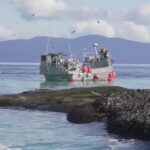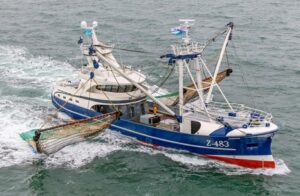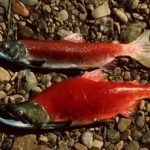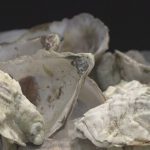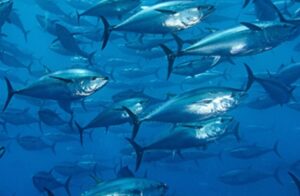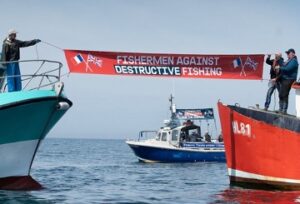Tag Archives: Commercial fishing history
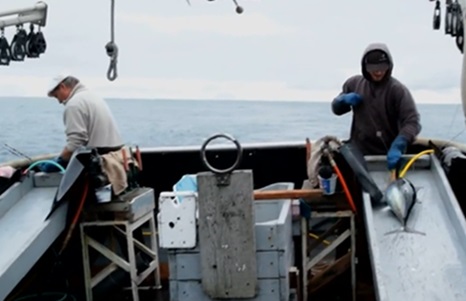
All hail the king of tuna, Oregon’s prized catch
One of Oregon’s most valuable seafoods is more popular than ever, but its nickname may fool you: chicken of the sea. It’s albacore tuna, and it is a fish that is grounded in Oregon commercial fishing history that reaches back nearly a century ago. Back then, West Coast fishermen went far out to sea in search of the albacore, also known as “chicken of the sea.” Albacore tuna entered Oregon fish markets in the 1930s when Oregon ports from Coos Bay to Astoria were home to large fishing fleets, dozens of canneries and thousands of employees who processed the catch. While Oregon’s large-scale canneries are long gone, albacore fishing techniques haven’t changed much at all, according to Steve Fick of Fishhawk Fisheries. Video, more, >>CLICK TO READ<< 09:55
HUMBOLDT HISTORY: The Salmon Canneries of the Lower Eel River and the Death of a Fishery
 Eel River salmon have been the Humboldt Bay Region’s premier fish from time immemorial. Salmon was a major staple of the aboriginal Wiyot Indians’ diet, and when the earliest white settlements were established along the river commercial salmon fishing began almost immediately. The first extensive commercial salmon fishery on the Eel River was established in 1853 by Jesse Dungan, a successful former gold miner who had bought a 300-acre ranch in the lower Eel River valley. Other commercial salmon fishermen soon followed, often forming partnerships. Pioneer firms fishing the estuary in 1859 included Dungan & Denman, John Mosely, Martin & Plummer, Gilman & Skinner, William Ellery & Bro., Thomas Worth, Parcells & Nicholson, and Dickerman & Miller. They operated from the mouth of the river upstream to the head of tidewater — near the present Fernbridge. Photos, much more, >>CLICK TO READ<< 12:12
Eel River salmon have been the Humboldt Bay Region’s premier fish from time immemorial. Salmon was a major staple of the aboriginal Wiyot Indians’ diet, and when the earliest white settlements were established along the river commercial salmon fishing began almost immediately. The first extensive commercial salmon fishery on the Eel River was established in 1853 by Jesse Dungan, a successful former gold miner who had bought a 300-acre ranch in the lower Eel River valley. Other commercial salmon fishermen soon followed, often forming partnerships. Pioneer firms fishing the estuary in 1859 included Dungan & Denman, John Mosely, Martin & Plummer, Gilman & Skinner, William Ellery & Bro., Thomas Worth, Parcells & Nicholson, and Dickerman & Miller. They operated from the mouth of the river upstream to the head of tidewater — near the present Fernbridge. Photos, much more, >>CLICK TO READ<< 12:12
Manatee History Matters: Female fishermen of early Cortez
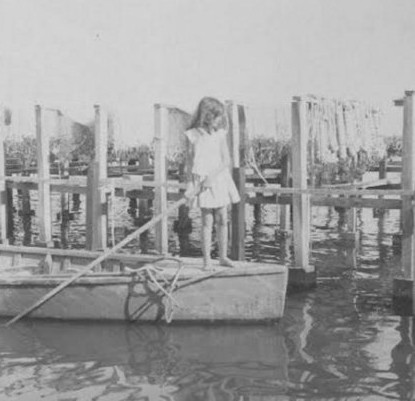 The early fishermen who settled Cortez used skipjacks, or shallow draft sail boats, to bring in their commercial catch. Their nets were made of natural fibers that were heavy when wet and required treatment and drying between uses. Their work was demanding and sometimes dangerous, but they persevered. What you may not know is that some of these hard-working fishermen were women. (And yes, they referred to themselves as fishermen, regardless of their gender.) Read the rest here 20:16
The early fishermen who settled Cortez used skipjacks, or shallow draft sail boats, to bring in their commercial catch. Their nets were made of natural fibers that were heavy when wet and required treatment and drying between uses. Their work was demanding and sometimes dangerous, but they persevered. What you may not know is that some of these hard-working fishermen were women. (And yes, they referred to themselves as fishermen, regardless of their gender.) Read the rest here 20:16
One of the Last Pound Fishermen Tells the Story
 “I remember a woman from Brooklyn asked me if it was called a pound fishery because we sold the fish by the pound. Well, we sold it by the pound, the box and the barrel, but that’s not why. I heard it was because like a dog pound, the pockets collect the fish and trap them so it’s a fish pound. But I really don’t know. We just always called it the pound.” Carl Tarnow, Designed Exhibit for Tuckerton Seaport. Read the rest here 08:18
“I remember a woman from Brooklyn asked me if it was called a pound fishery because we sold the fish by the pound. Well, we sold it by the pound, the box and the barrel, but that’s not why. I heard it was because like a dog pound, the pockets collect the fish and trap them so it’s a fish pound. But I really don’t know. We just always called it the pound.” Carl Tarnow, Designed Exhibit for Tuckerton Seaport. Read the rest here 08:18


































